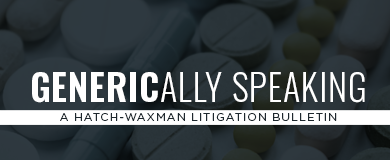- Acumen Powered by Robins Kaplan LLP®
- Affirmative Recovery
- American Indian Law and Policy
- Antitrust and Trade Regulation
- Appellate Advocacy and Guidance
- Business Litigation
- Civil Rights and Police Misconduct
- Class Action Litigation
- Commercial/Project Finance and Real Estate
- Corporate Governance and Special Situations
- Corporate Restructuring and Bankruptcy
- Domestic and International Arbitration
- Entertainment and Media Litigation
- Health Care Litigation
- Insurance and Catastrophic Loss
- Intellectual Property and Technology Litigation
- Mass Tort Attorneys
- Medical Malpractice Attorneys
- Personal Injury Attorneys
- Telecommunications Litigation and Arbitration
- Wealth Planning, Administration, and Fiduciary Disputes
Acumen Powered by Robins Kaplan LLP®
Ediscovery, Applied Science and Economics, and Litigation Support Solutions
-
April 29, 2024Robins Kaplan Mourns Death of New York Associate Waleed Abbasi
-
April 29, 2024Robins Kaplan Secures $7.75 Million Verdict in Aerosol Dust Remover Abuse Case
-
April 23, 2024David Martinez Recognized Among Top 100 Lawyers in Los Angeles by LA Business Journal
-
May 9, 2024Property Insurance Claims Group 2024 Conference
-
May 20, 2024The Present and Future of DEI
-
May 23, 202414th Annual Disability Justice Seminar
-
April 30, 2024A World Without Non-Competes: Protecting Confidential Information and Trade Secrets Following the FTC's Ban
-
First QuarterGENERICally Speaking: A Hatch-Waxman Litigation Bulletin
-
March 2024e-Commerce: Pitfalls and Protections
-
September 16, 2022Uber Company Systems Compromised by Widespread Cyber Hack
-
September 15, 2022US Averts Rail Workers Strike With Last-Minute Tentative Deal
-
September 14, 2022Hotter-Than-Expected August Inflation Prompts Massive Wall Street Selloff
Find additional firm contact information for press inquiries.
Find resources to help navigate legal and business complexities.
AstraZeneca AB v. Zydus Pharms. (USA) Inc.
Farxiga® (dapagliflozin)
October 15, 2021

Case Name: AstraZeneca AB v. Zydus Pharms. (USA) Inc., C.A. No. 18-664-RGA, 2021 WL 4819905 (D. Del. Oct. 15, 2021) (Andrews, J.)
Drug Product and Patent(s)-in-Suit: Farxiga® (dapagliflozin); U.S. Patent No. 6,515,117 (“the ’117 patent”)
Nature of Case and Issue(s) Presented: In March 2018, Zydus sent a notice letter to AstraZeneca regarding the submission of Zydus’s ANDA to FDA seeking permission to market a generic version of AstraZeneca’s Farxiga. Zydus’s ANDA contained a Paragraph IV certification that the ’117 patent was invalid and/or not infringed by Zydus’s ANDA product. AstraZeneca sued Zydus under 35 U.S.C. § 271(e) alleging that Zydus’s proposed ANDA product infringed the ’117 patent. By trial, the dispute was narrowed to the validity of claims 1-3, 14, and 16 of the ’117 patent (the “asserted claims”). Zydus alleged that the asserted claims were invalid as obvious. After a four-day bench trial, the court issued a decision finding the asserted claims not invalid.
Why AstraZeneca Prevailed: The ’117 patent claims pharmaceutical compounds and methods of treatment of diabetes and related diseases through inhibition of sodium dependent glucose transporters (SGLT2) found in the intestine and kidney. The asserted claims of the ’117 patent recite a pharmaceutical composition and methods of treating diabetes and related diseases with a therapeutic amount thereof. The court analyzed whether the claimed pharmaceutical composition was obvious over the three prior art references Zydus asserted: “WO ’128;” “Hongu;” and “Kees.”
The court found that WO ’128 disclosed eighty structurally similar compounds as prospective SGLT2 inhibitors, but that the reference did not disclose comparative biological activity for any listed compound, including the compounds listed as “preferred.” The court therefore found that WO ’128 did not disclose a lead compound for further development. The court also found that each of Kees and Hongu taught away from the patented modification of the compound because each reference showed that the modification resulted in decreased biological activity. Therefore, the court found that a POSA would not have been motivated to make the patented modification and would not have had a reasonable expectation of success.
Based on the factual findings, the court concluded that the claims of the ’117 patent were not obvious. While Zydus argued that the patented compound was one small change away from one of the examples disclosed in WO ’128, the court noted that Zydus’s argument presupposed that a POSA would have chosen the example compound as a lead compound. Further, the court found that even if it had found that Kees and Hongu do not teach away, Zydus still would not have met its burden. It is not enough for Zydus to show that the references did not teach away; “Zydus needed to show by clear and convincing evidence that a POSA would have had an affirmative reason to make the change.” Thus, the court concluded that Zydus failed to prove invalidity based on obviousness and found each of the asserted claims infringed (by stipulation).
Related Publications
Related News
If you are interested in having us represent you, you should call us so we can determine whether the matter is one for which we are willing or able to accept professional responsibility. We will not make this determination by e-mail communication. The telephone numbers and addresses for our offices are listed on this page. We reserve the right to decline any representation. We may be required to decline representation if it would create a conflict of interest with our other clients.
By accepting these terms, you are confirming that you have read and understood this important notice.
